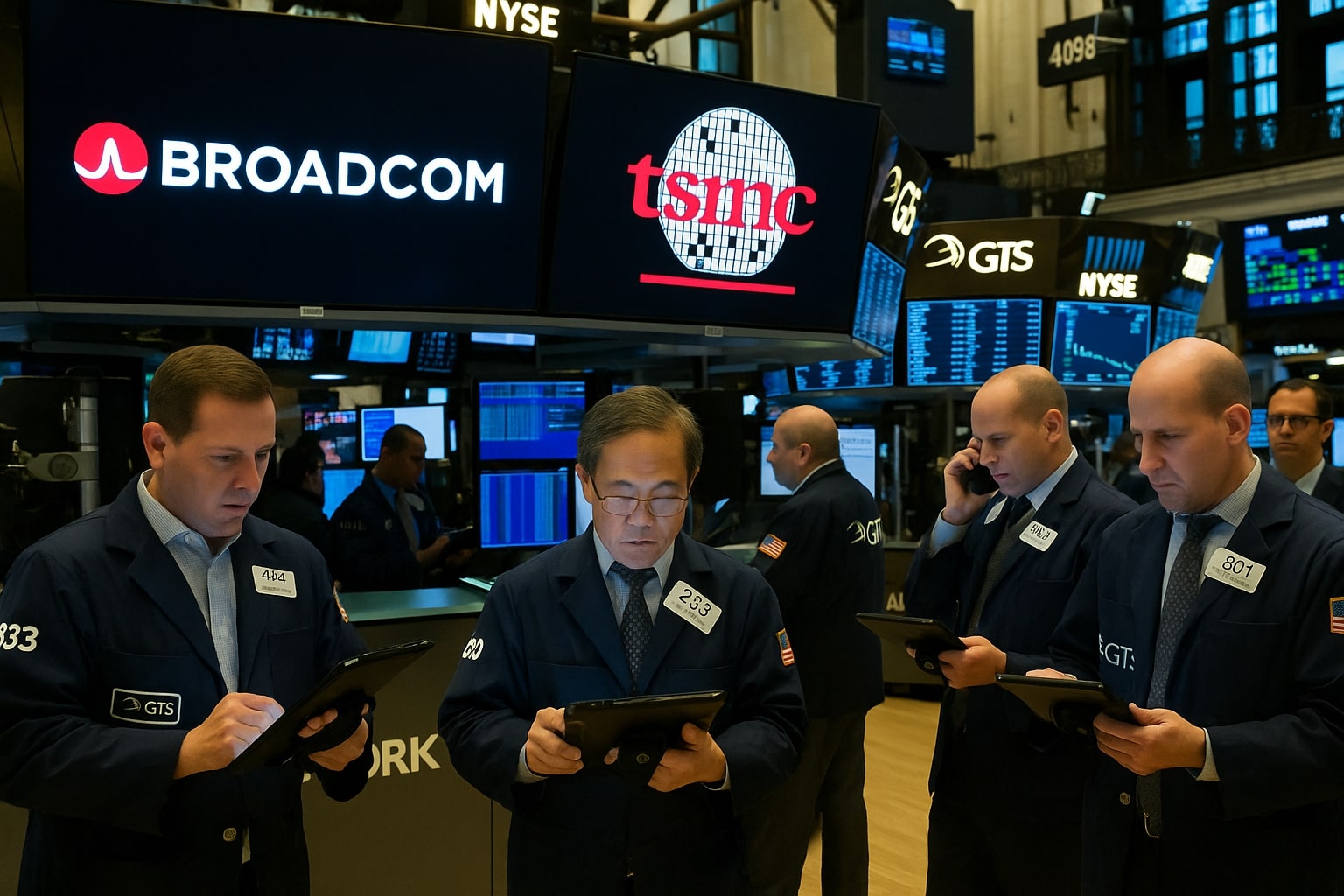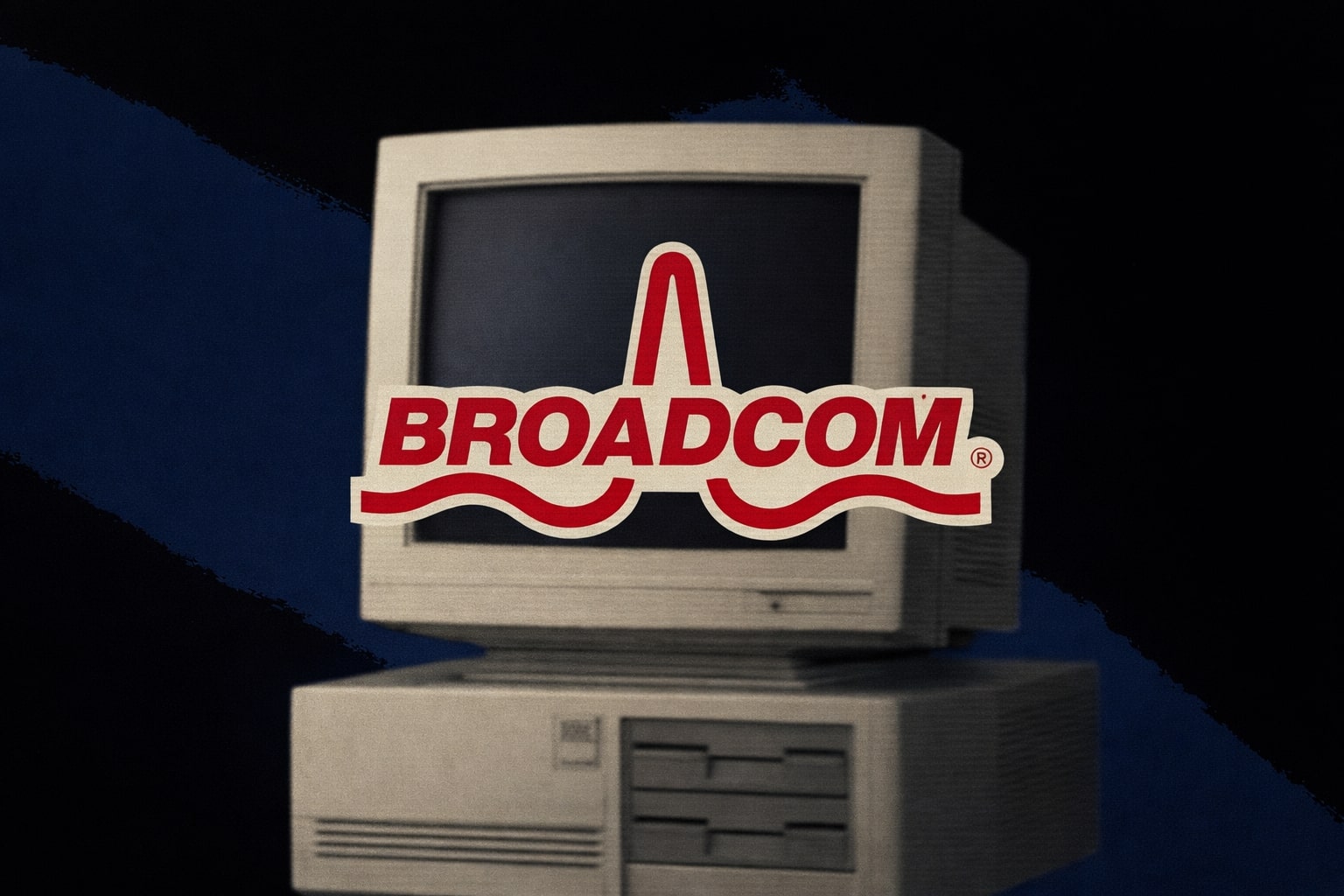Broadcom (NASDAQ:AVGO) vs. Taiwan Semiconductor (NYSE:TSM): Two Giants Shaping the AI Era
When evaluating the semiconductor industry in 2025, it is impossible to ignore the two most influential companies driving the global AI buildout: Broadcom (NASDAQ:AVGO) and Taiwan Semiconductor Manufacturing Company (NYSE:TSM). Both have delivered stellar returns this year, both are central to the AI supply chain, and both are sitting near all-time highs. But beneath the surface, they operate in very different segments, with unique advantages, risks, and valuation profiles that investors need to weigh carefully.
Stock Price Momentum and Market Position
Broadcom has become one of the most powerful players in the semiconductor and infrastructure software markets. Its stock surged to $336.04, adding almost 10% in a single session, which pushed its market capitalization above $1.58 trillion. The company’s rally has been fueled by AI-driven networking demand, hyperscaler spending, and the integration of VMware.
Taiwan Semiconductor, trading at $240.65, is also near its record 52-week high of $248.28. Its valuation sits at $1.25 trillion, reflecting its unique role as the global foundry leader, responsible for producing over 60% of the world’s contract chips and virtually all of the most advanced nodes (3nm, 5nm). Unlike Broadcom, which designs its own chips, TSM is the manufacturing backbone for Nvidia, Apple, AMD, and Qualcomm, among others. Its performance directly mirrors global chip demand, and its market dominance has only grown stronger as AI adoption accelerates.
Earnings Growth and Financial Strength
Both companies are printing numbers that justify investor enthusiasm. TSM’s Q2 2025 earnings report was a blockbuster: revenue rose 54% year-over-year to $31.67 billion, while net profit surged 60% to $9.2 billion. Gross margins climbed to 58.6%, and management lifted full-year growth guidance to 30%, up from 20%. HPC chips, heavily driven by AI workloads, now make up 60% of revenue, compared to 52% a year earlier.
Broadcom, on the other hand, reported $26.3 billion in revenue for its latest quarter, up 47%, powered by demand for AI networking chips, custom silicon, and VMware’s contribution. Net income exceeded $7 billion, with a staggering gross margin near 77%—far higher than TSM’s. Yet Broadcom’s top-line scale still lags Taiwan Semiconductor, and much of its earnings growth depends on hyperscaler capital expenditure cycles.
Margins and Pricing Power
Broadcom enjoys a unique advantage: it is less capital intensive than a foundry, and it has extraordinary pricing power in its specialized niches. Networking chips, AI accelerators, and storage solutions give it leverage to maintain operating margins above 60%. Investors pay for that consistency with a premium valuation—forward P/E near 30 and EV/EBITDA above 17.
Taiwan Semiconductor, while operating at thinner margins than Broadcom, still commands enviable profitability for a manufacturer. Its gross margins near 59% are supported by relentless CapEx investments of $38–42 billion this year, which ensure its leadership in 2nm and 3nm nodes. Unlike Broadcom, which focuses on design, TSM must carry the heavy burden of equipment spending, but that CapEx also secures a moat competitors cannot match.
Dividends and Capital Allocation
For income investors, Broadcom is the clear winner. The company pays one of the highest dividends in tech: nearly 2% yield, or $21.60 per share annually, with consistent growth. It also engages in share buybacks, signaling confidence in its long-term cash flow.
TSM pays a more modest 1.42% yield, about $3.34 per ADR annually. The difference is that TSM reinvests its cash flow into new fabs, keeping shareholder payouts relatively conservative. While this may disappoint income-focused investors, the reinvestment supports long-term compounding by securing dominance in next-generation process nodes.
AI Exposure and Growth Catalysts
Broadcom’s AI story revolves around networking switches, ASICs, and VMware’s cloud stack. Hyperscalers such as Meta, Google, and Microsoft are spending billions on AI datacenters, and Broadcom’s chips are critical in moving data at scale. VMware integration deepens Broadcom’s role in enterprise software and hybrid cloud, adding another leg of growth.
TSM, however, sits at the very core of AI adoption. Every Nvidia GPU, every Apple silicon chip, every AMD accelerator, and most custom AI ASICs run on TSMC’s nodes. In Q2, 3nm wafers already accounted for 24% of revenue, and AI demand has tripled since 2024. Analysts forecast AI-related revenue doubling again in 2025. With 2nm and A16 nodes ramping by 2026, TSMC is positioned not just as a beneficiary of AI, but as the enabler of the entire ecosystem.



















